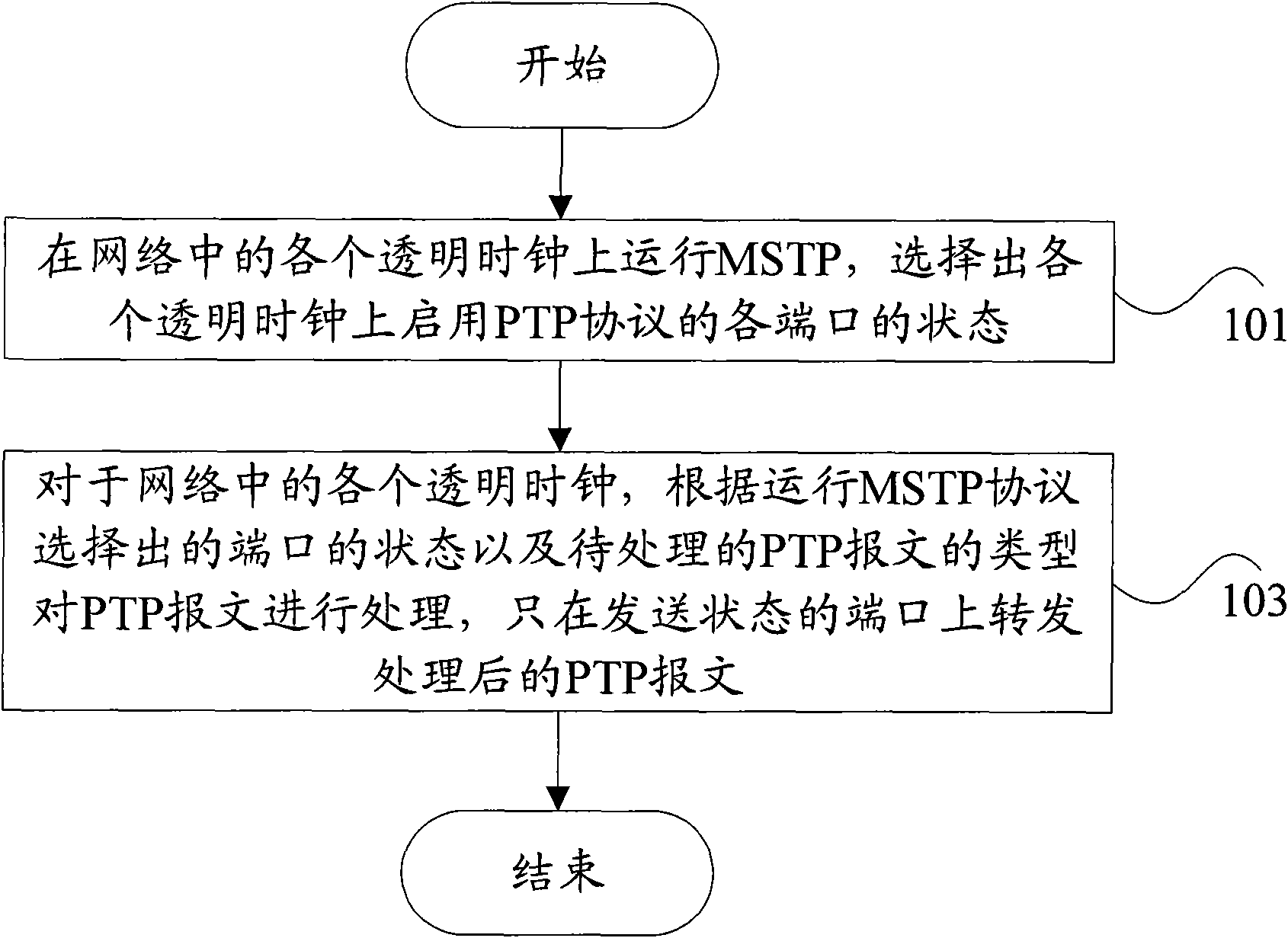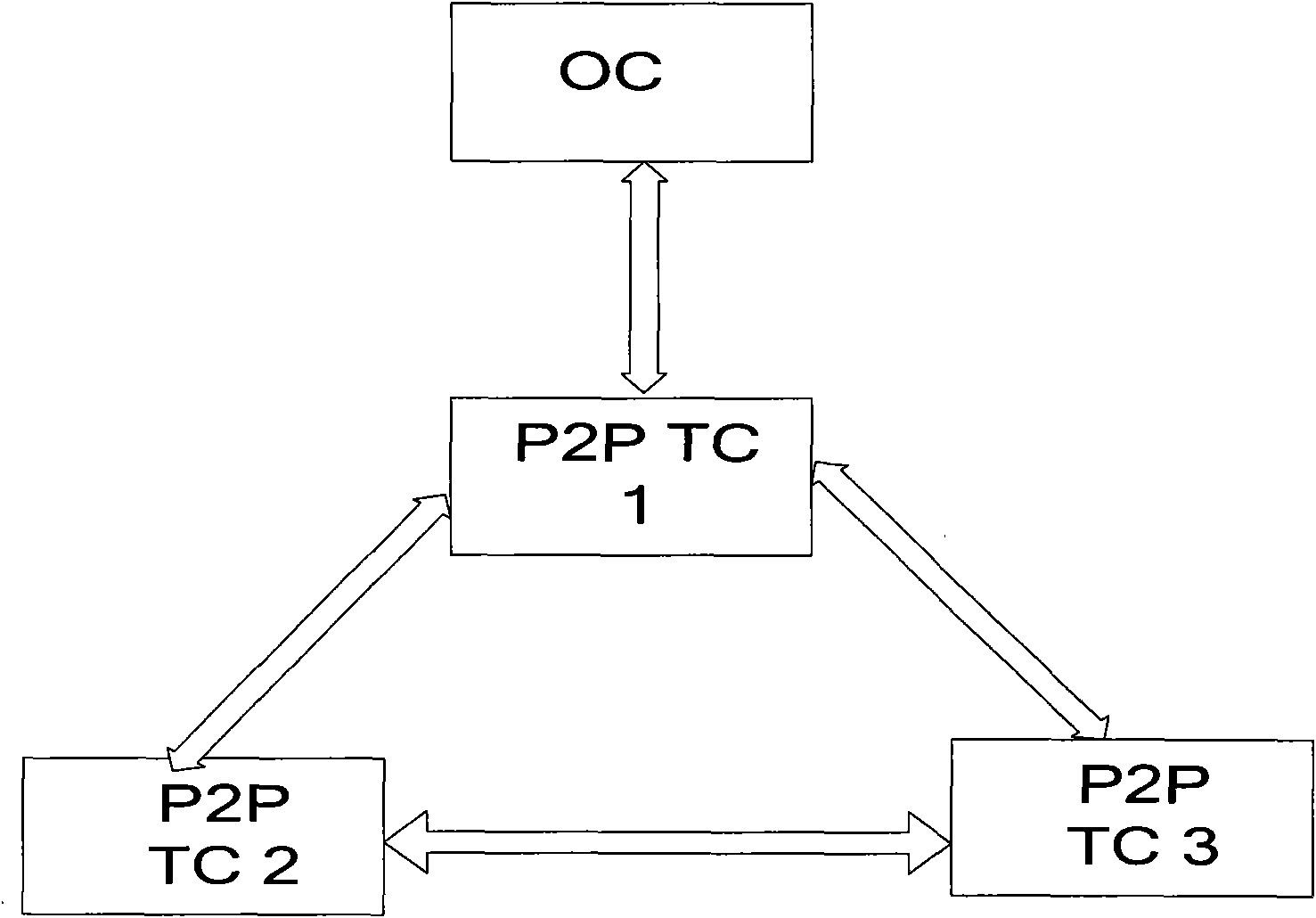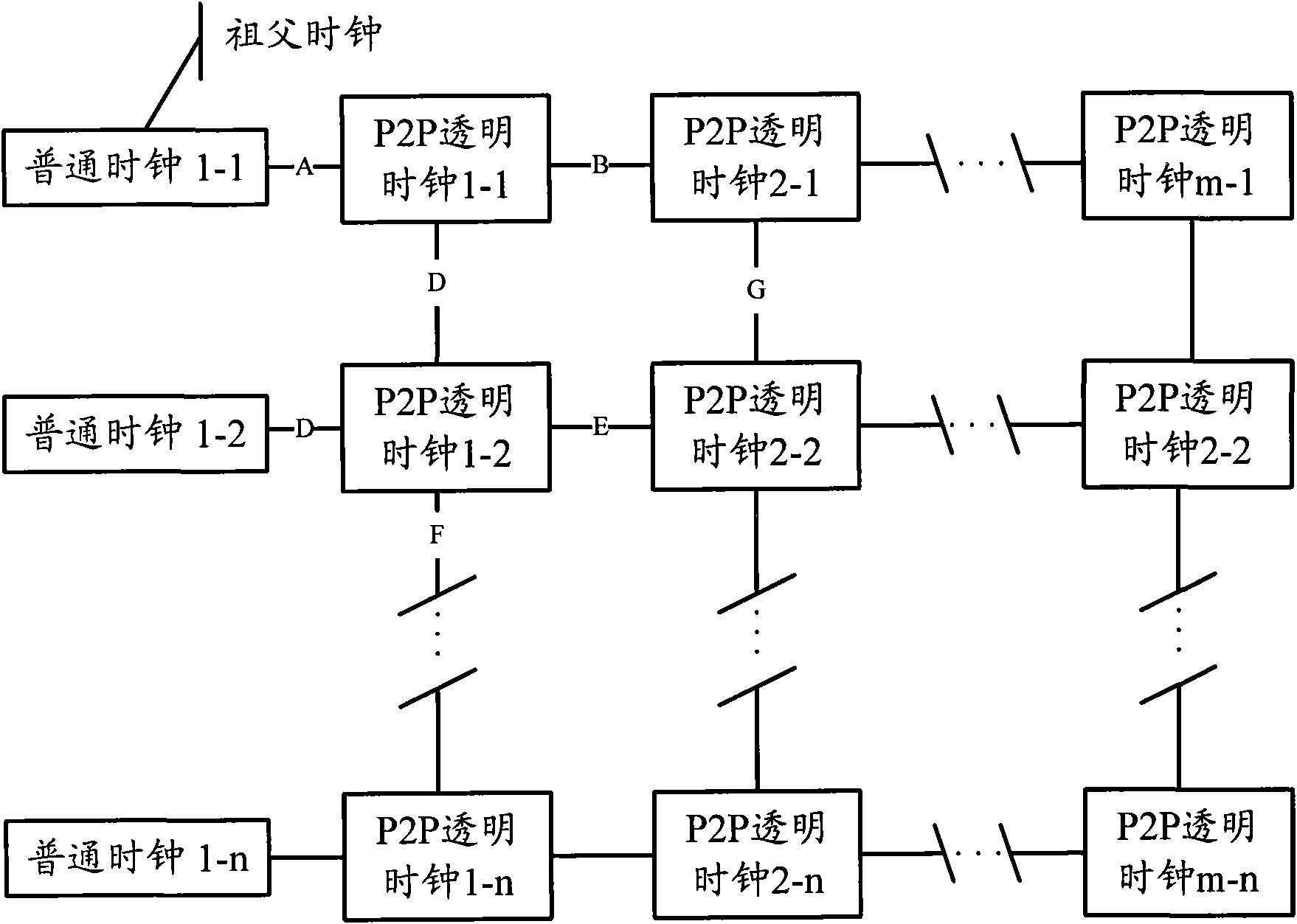Method and device for processing precise time transfer protocol message
A message processing and precise time technology, applied in the field of mobile communication, can solve the problems of PTP message looping and achieve the effect of preventing looping
- Summary
- Abstract
- Description
- Claims
- Application Information
AI Technical Summary
Problems solved by technology
Method used
Image
Examples
Embodiment 1
[0042] This embodiment takes figure 2 Take the network composed of transparent clocks shown as an example for illustration, such as figure 2 As shown, in this network, the port connected to the ordinary clock (OC) and the P2P transparent clock (P2P TC) 1 acts as the master (MASTER) port, and actively initiates the PTP synchronization message (Sync) message and the PTP point-to-point delay Request message (Pdelay_Rep), and respond to Pdelay_Req message. exist figure 2 All connected ports on the P2P transparent clock (P2P TC) will forward the Syn message, actively initiate the Pdelay_Rep message, and respond to the Pdelay_Req message.
[0043] exist figure 2 Three P2P TCs form the PTP message loop, then according to the PTP message processing method of the embodiment of the present invention, the network in the present embodiment is processed as follows:
[0044] (1) MSTP protocol is enabled on all P2P transparent clocks in the figure, an instance is created, and the VLA...
Embodiment 2
[0048] This embodiment takes image 3 The shown mesh network is taken as an example to illustrate the technical solutions provided by the embodiments of the invention. Specifically, it mainly includes the following processing steps:
[0049] In step 1, the port of the ordinary clock 1-1 on link A as the grandfather clock acts as the MASTER port, actively initiates a Sync message and a Pdelay_Rep message, and responds to a Pdelay_Req message.
[0050] Other ordinary clocks in the figure are used as slave clocks, and the time is synchronized with ordinary clock 1-1;
[0051] Step 2: After receiving the Sync message on link A, the P2P transparent clock 1-1 forwards it to two links B and C; after receiving the Pdelay_Req message, it sends it to the PTP protocol stack module for processing, and the node clock Pdelay_Req messages are sent on links A, B and C.
[0052] The processing of other P2P transparent clocks in the figure is similar to that of P2P transparent clock 1-1, and...
Embodiment 3
[0059] This embodiment takes Figure 4 The network structure shown is taken as an example to describe the technical solutions provided by the embodiments of the present invention. Such as Figure 4 shown in Figure 4 In the shown network, devices 1 and 2 of the convergence ring are set to the boundary clock function, devices 3, 4 and 5 are set to the transparent clock function (for example, P2P transparent clock), and all devices on the access ring are set to the transparent clock function (for example, P2P transparent clock). Moreover, a TD base station is connected to the access ring equipment, and each TD base station has a common clock function. All PTP devices use the one-step clock mode defined by 1588v2.
[0060] According to the technical solution provided by the embodiment of the present invention, for Figure 4 In the shown network, the network is a PTP clock domain, and the domain delay measurement mechanism is the Peer delay mode, and the network is also an MS...
PUM
 Login to View More
Login to View More Abstract
Description
Claims
Application Information
 Login to View More
Login to View More - R&D
- Intellectual Property
- Life Sciences
- Materials
- Tech Scout
- Unparalleled Data Quality
- Higher Quality Content
- 60% Fewer Hallucinations
Browse by: Latest US Patents, China's latest patents, Technical Efficacy Thesaurus, Application Domain, Technology Topic, Popular Technical Reports.
© 2025 PatSnap. All rights reserved.Legal|Privacy policy|Modern Slavery Act Transparency Statement|Sitemap|About US| Contact US: help@patsnap.com



